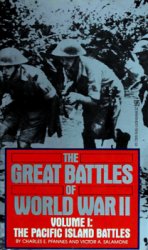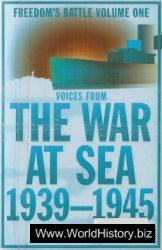Marines and 70 civilians killed) surrendered early on December 23. The ill-mounted Japanese invasions had cost them two destroyers and two transports sunk and around 1,150 killed or wounded. On the American side, Adm Pye’s recall (possibly fearing an untimely fleet action) of Vice Adm Fletcher’s task force sent from Pearl Harbor to relieve Wake — and Fletcher’s dilatoriness in refuelling at sea, which contributed to Pye’s decision - were subsequently much criticized. RO’N.
Wake Island (Truman-MacArthur meeting, October 15 1950), the Korean War. Occurred just after UN troops had crossed the 38th Parallel into North Korea. Truman proposed the meeting to associate himself with the victor of Inchon on the eve of congressional elections and to emphasize to MacArthur that the Far East was only a part of America’s global responsibilities. MacArthur predicted an early end to the war and remarked that if the Chinese intervened they would be slaughtered by US air power. Eighth Army could begin redeploying to Japan by Christmas. Truman returned from Wake in an optimistic mood and expressed his full confidence in MacArthur. CM.
Walcheren. Although the port of Antwerp was captured almost intact by the British Second Army in September 1944, access to it was denied by the presence of strong German garrisons at the mouth of the Scheldt, on Walcheren and Beveland. The Canadian First Army was assigned to clearing these and reinforced with Royal Marines and Special Forces in order to overcome the strong West Wall fortiflcations. The raf was called in to breach the dykes with heavy bomber attacks and this flooded the low-lying polderland. German resistance was flerce and casualties heavy. Even after the defence had been overcome, a 70-mile (112km) channel had to be swept of mines before the first ships were able to use the port of Antwerp on November 26. MH.
Waldau, Lt Gen Otto Hoffmann
Von (1898-1943). Ger. Flieger-filhrer Afrika, April—August 1942; then Comraa. ndQr Fliegerkorps X.
Walker, Capt Frederick J (1896
1944). Br. Greatest U-boat killer of World War 11. Brilliant trainer of the 36th then 2nd Escort Groups which he commanded from Stork. The former fought a brilliant action around a Gibraltar convoy; the latter destroyed 16 U-boats. Walker developed the “creeping attack” — one escort guiding another into the attack. He died of a stroke brought on by overwork.
Walker, Gen Sir Walter Colyear
(b. l912). Br. Walker’s experience as an officer of Gurkhas in the Burma campaign, 1942-45, proved invaluable during the Malayan Emergency, 1948-60, when he headed a Jungle Warfare School. In December 1962, Walker, then commanding 17th Gurkha Division, was appointed Commander, British Forces, Borneo, and Director of Operations during the Malaysian-Indonesian Confrontation. His campaign along the Sabah-Sarawak border against raiders from Kalimantan, in which he made expert use of ambush by helicopter-borne troops, was especially successful when, from mid-1964, his forces were allowed to penetrate Kalimantan to a depth of about 11 miles (18km) in “Claret” raids. Walker’s insistence on this politically-sensitive measure, together with his openly-expressed opposition to reduction in Gurkha strength, made him a somewhat controversial figure; however, he went on to serve as Deputy and Acting cos. Allied Forces Central Europe, 1965-67, c-in-c Northern Command, 196769, and c-in-c. Allied Forces Northern Europe, until his retirement in 1972. RO’N.
Walker, Lt Gen Walton Harris (“Johnny”) (1889-1950). US. Served as one of Patton’s corps commanders during World War 11. In 1948 he took over the Eighth Army in Japan and became MacArthur’s field commander in Korea on July 6 1950. His troops were poorly trained and rapidly driven back. On July 29 1950, as his command retreated into the Pusan Perimeter, Walker issued an order to “stand or die”. Despite his dogged defence of the Perimeter in August 1950, he was blamed for the poor performance of his troops early in the fighting. In
October 1950 he captured the North Korean capital, Pyongyang, but Chinese intervention. soon forced Eighth Army into headlong retreat and Walker was again criticized. On December 22 1950 he was killed in a jeep accident and replaced by Ridgway. CM.
Walrus, Supermarine (Br, WWII). Shipboard observation/air-sea rescue amphibian; crew 4. Prototype (Seagull V, for Australia) flew June 21 1933; ordered by rn as Walrus 1935. Operated from warships by catapulting, and from overseas bases; much varied wartime use; in service until 1946. Production, 25 Seagulls V, 746 Walrus. One 635hp Bristol Pegasus I1M2 or 750hp Pegasus VI engine; max. speed 135mph (216kph); two 0.303in machine guns, bombs and depth charges.
Walsh, Col Kenneth A (b. l916). US. Walsh won his wings as a usMC enlisted man, wa commissioned in 1942 and scored 21 aerial combat victories, mostly flying F4U Corsairs with VMF-124 in the Southwest Pacific.
Walt, Lt Gen Lewis W (b. l913). US. Assumed command of the US 3rd Marine Division, Vietnam, in June 1965. He served concurrently as commander of the III Marine Amphibious Force, which became a corps-level headquarters for all US Marine and Army units in I Corps Tactical Zone. Until his departure in 1967, he supervised the American build-up in the northern portion of South Vietnam.
Wanklyn, Lt Commander David
(1911-42). Br. Successful submarine commander. Operating from Malta in Upholder, he won the VC, May 1941, for his attack on an Italian troop convoy. He also sank the 18,000-ton Conte Rosso. Upholder failed to return from patrol in April 1942.
Wallis, Sir Barnes Neville (1887-1979).
Br. Designed the airship R 100 and from such work applied the principle of geodetic consti’uc-tion to aircraft, notably the Wellington. Invented the bouncing bomb used in the Dams raid and also the Tallboy and Grandslam penetrating bombs used by Bomber Command 1944—45.




 World History
World History









